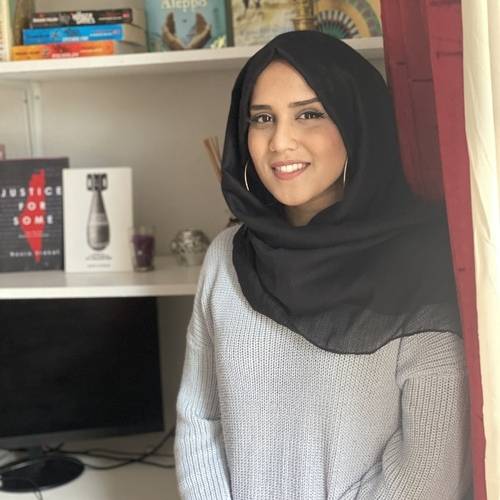For close to 300 days a year, Abdelrahman Hassanein’s workmates are lions, cheetahs, buffalo and elephants. Not for him a desk, computer and colleagues engaged in mundane work. Instead, the 39-year-old Egyptian naturalist and wildlife photographer, is the safari director at Talek Bush Camp in Kenya, and usually keeps company with whichever animals he happens to be observing.
“I was captivated by wildlife long before the internet era,” Hassanein told me. “From a very early age, I would watch documentaries and cartoons related to wildlife and Africa on VHS video tapes that my father would bring home.” Now his work is featured by National Geographic, the BBC, Lonely Planet and Forbes among others. He said that he always prefers the company of animals over fellow human beings.
Based in the 579 square-mile Masai Mara National Reserve, which connects with the Serengeti across the border in Tanzania, the Talek Bush Camp was founded in 2017 by a close friend. He joined the team to organise safaris and accommodation for visitors.
![Egyptian wildlife photographer Abdelrahman Hassanein spends his time capturing shots of African Buffalo in Kenya [Abdelrahman Hassanein]](https://i0.wp.com/www.middleeastmonitor.com/wp-content/uploads/2022/11/MG_5181.jpg?resize=933%2C622&ssl=1)
Egyptian wildlife photographer Abdelrahman Hassanein spends his time capturing shots of African Buffalo in Kenya [Abdelrahman Hassanein]
He doesn’t have a fixed role because there’s so much to do. “Sometimes I’m a manager or a tour guide or even a driver at times. Being surrounded by so much exciting wildlife, it’s just impossible to get bored here or have nothing to do.”
Spending so much time in the wild, he learns something new every day. “Male lions are my favourite due to their unique characteristics. I always thought that they were lazy compared with the females, but since I started working here I have realised that they spend a lot of time patrolling at night to defend their territory.” The loss of a lioness could reduce the chances of a successful hunt, he added, but the loss of a dominant male could destroy the pride.
READ: Bird flu killing thousands of cranes in Israel’s Hula Valley
![Close up of a lion [Abdelrahman Hassanein]](https://i0.wp.com/www.middleeastmonitor.com/wp-content/uploads/2022/11/MG_0278-01-02.jpeg?resize=222%2C333&ssl=1)
Close up of a lion [Abdelrahman Hassanein]
Inspired by the wildlife that he has observed since he was a boy, his passion to capture its beauty began with sketches. He then got his hands on a camera and started to document the creatures that he saw digitally.
After graduating with a degree in English Literature from Cairo University, Hassanein settled for an office job in Qatar with a good salary that enabled him to travel. “My first ever vacation was in the Serengeti in Tanzania. I fulfilled a childhood dream. It wasn’t long afterwards that I decided to quit my office job and be in the wild full time. A month every year was not enough for me.”
![A leopard carries her baby in Kenya [Abdelrahman Hassanein]](https://i0.wp.com/www.middleeastmonitor.com/wp-content/uploads/2022/11/PSX_20220528_235222.jpg?resize=444%2C333&ssl=1)
A leopard carries her baby in Kenya [Abdelrahman Hassanein]
“One dark, rainy night, I was returning to my tent without my torch and stepped into something which started to bite me,” he said. “My leg felt as if it was on fire. When I turned to see what it was, a hippo ran towards exactly the same spot I was supposed to pass. It was a frightening night.” The bites, he added, were from African ants. “Hippos, by the way, are responsible for more human fatalities in Africa than any other wild animal.”
Despite such an exciting lifestyle, Hassanein does appreciate a few minutes of peace and quiet. His favourite time of day is when he can drive out to an isolated part of the camp, far from the tourist spots, to catch his breath and let the beauty of the place just sink in. It is then, he said, that he is reminded of the wonders to be found in nature. “People should start to prioritise such moments.”
READ: Royal family among Qataris arrested for poaching rare bird
And nature is still able to deliver some awe-inspiring experiences, even for someone who spends most of their life in the bush. “Seeing a giraffe give birth was magnificent. As was following the daily adventures of a leopard called Luluka and her daughter Jilime. I saw Jilime being born in September 2020, and followed mother and daughter until their separation last month.”
As someone who has followed his dreams for most of his life, Abdelrahman Hassanein has some simple advice for anyone who wants to take up wildlife photography: “Invest in good lenses, learn as much as possible about the subject you want to photograph — you can’t shoot blindly — and have plenty of patience.” And then go for it.












